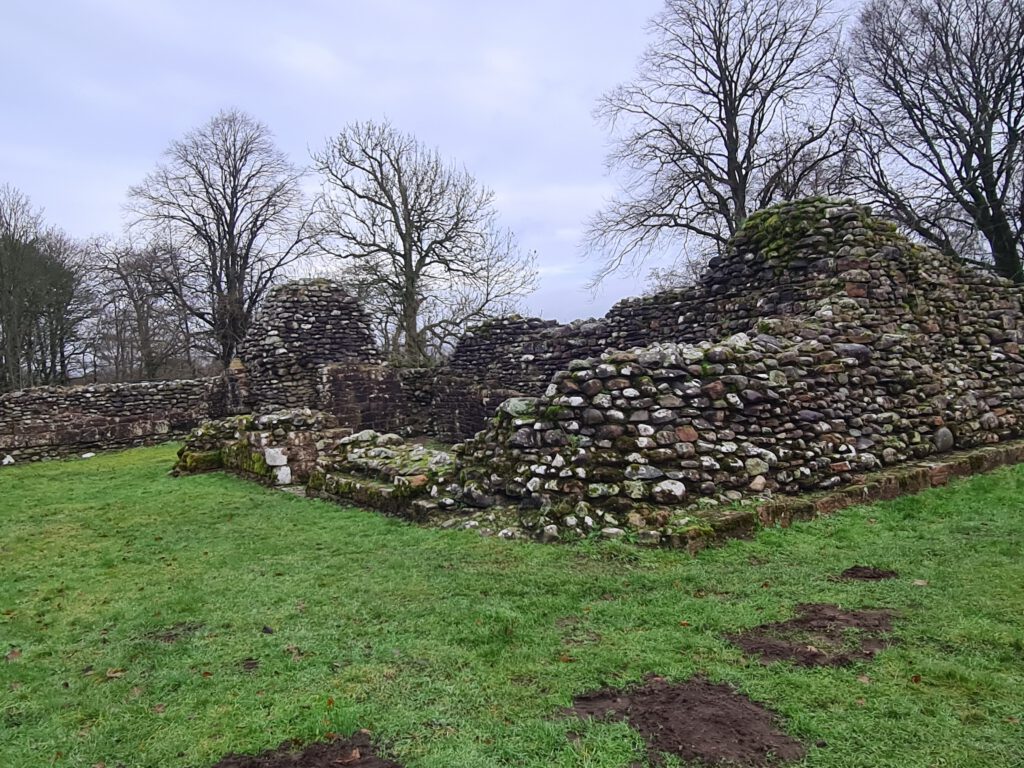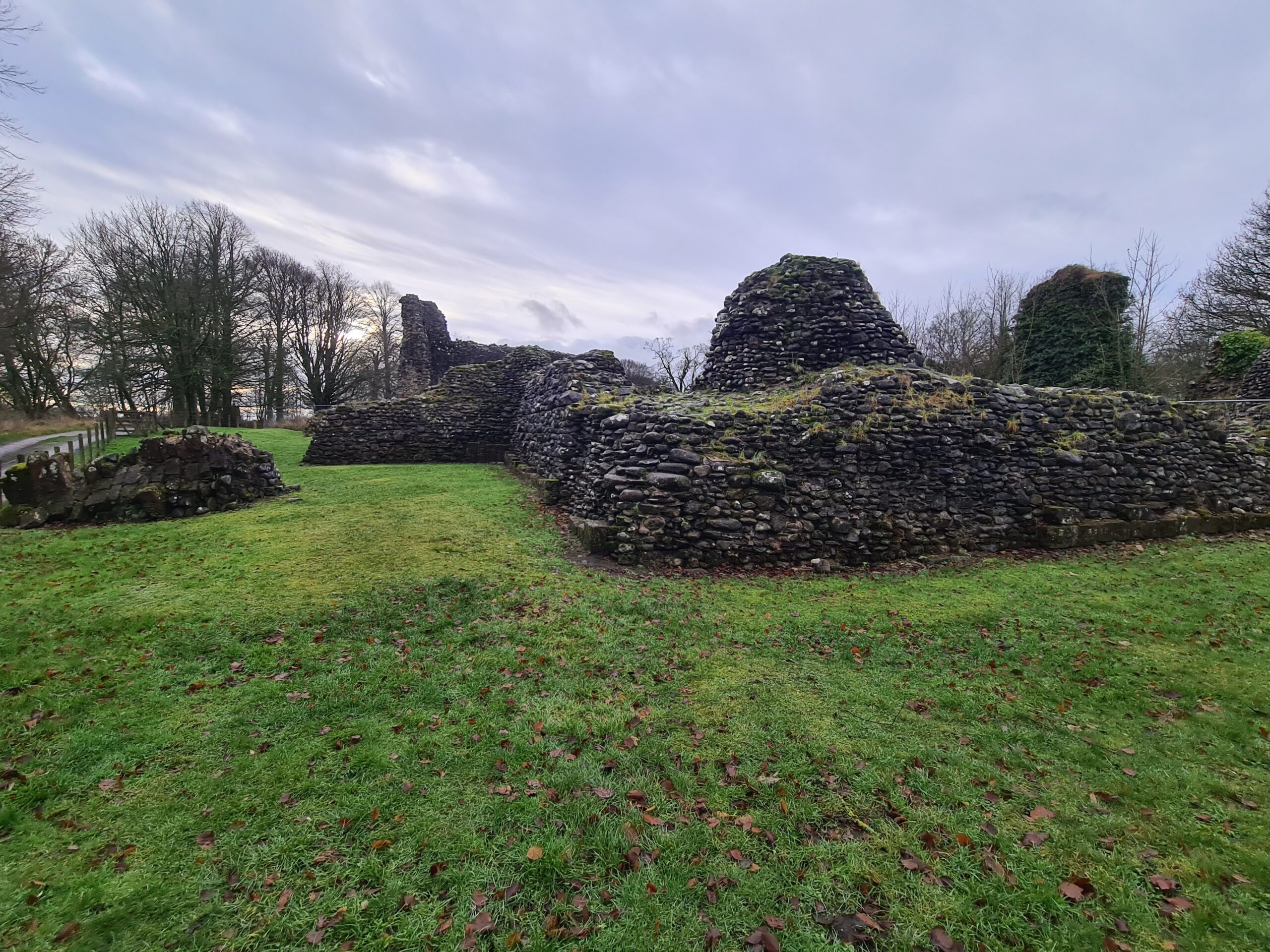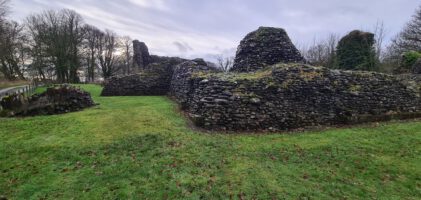Location: near Lochmaben, Dumfriesshire, Dumfries & Galloway, Scotland
kind of castle: z-plan tower house
today: ruined and opened to public (currently fences around the walls cause of masonry work)
public transport: regular busses from Dumfries to Lochmaben (from there a walk to the castle)
scheduled monument: yes
managed by: Historic Environment of Scotland
entrance fee: £ 0
opening times: all year round, exterior views only
directions: Lochmaben Castle – Google Maps
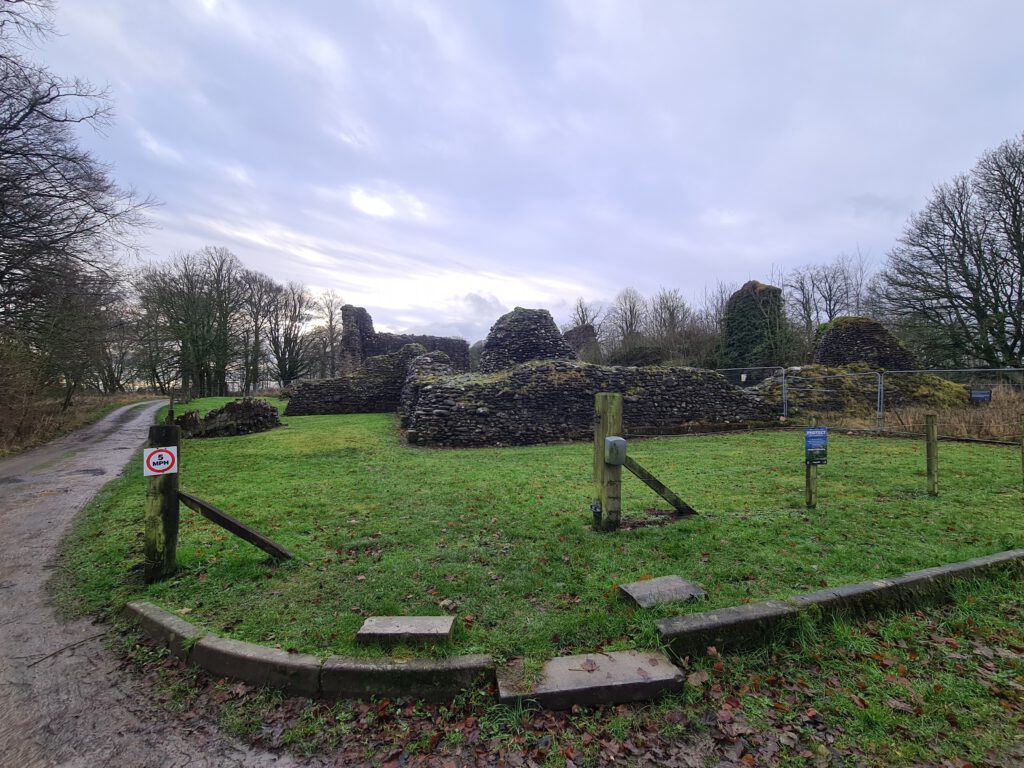
Located in the feudal Lordship of Annandale, Lochmaben Castle originally was built by the Bruce family before being replaced by the partly still today visible castle by Edward I. What the Bruce family first built around 1160, was a motte and bailey castle which lay a bit to the south of the current castle. It was at this old castle where Robert Bruce, Robert I, King of Scots was born.
When King Edward I replaced the old castle around 1300, he built a much sturdier structure. It took Archibald Douglas, Lord of Galloway and the Earls of March and Douglas a siege of nine days to take the castle off the English in 1385 after the stone buildings we can still see today was finished about a year earlier. Over the past years before finally being taken by the Lord of Galloway and his men the castle exchanged hands quite a few times between the English and the Scots.
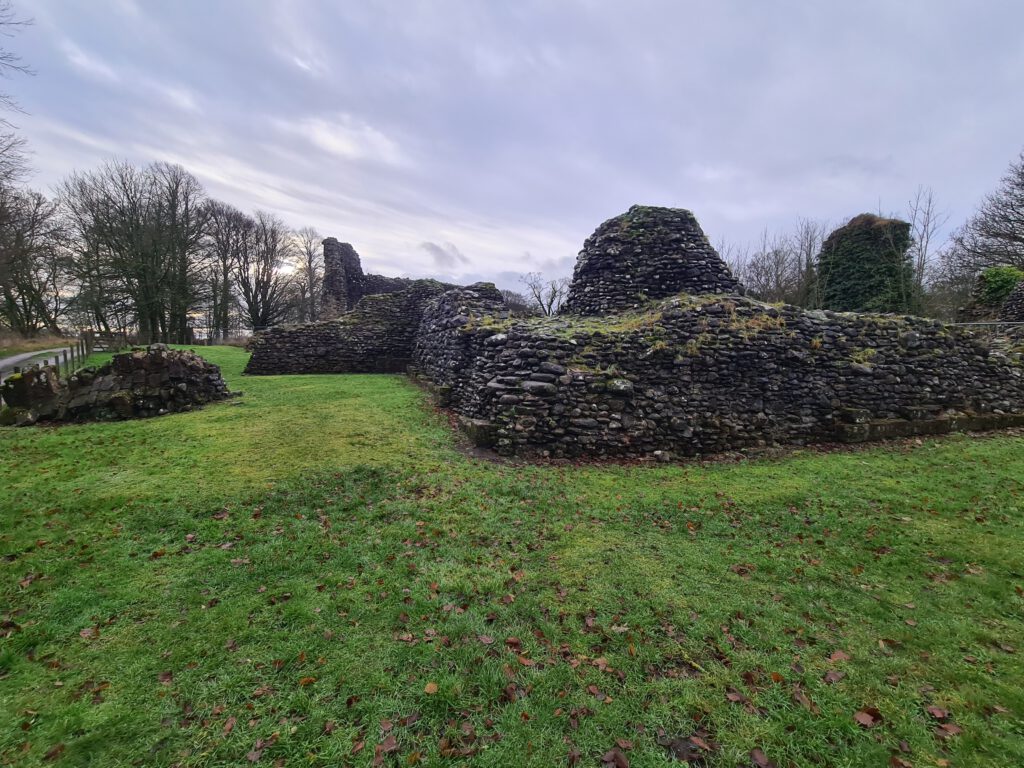
The exchange of ownership didn’t stop there though, although it was kept in the hands of the Scots ever since. After it was taken by Archibald Douglas, the barony became a possession of the Earls of March until 1409 when the 10th Earl was forfeited and reinstated. The grounds then went into the hands of the Maxwells who looked after it as the hereditary keepers.
After James II destroyed the Black Douglases in 1455 he acquired the castle. After changing into Alexander Stewart, Duke of Albany’s hands, the Lordship and the castle were annexed to the Crown by Act of Parliament which dates to the 1st of October 1487.
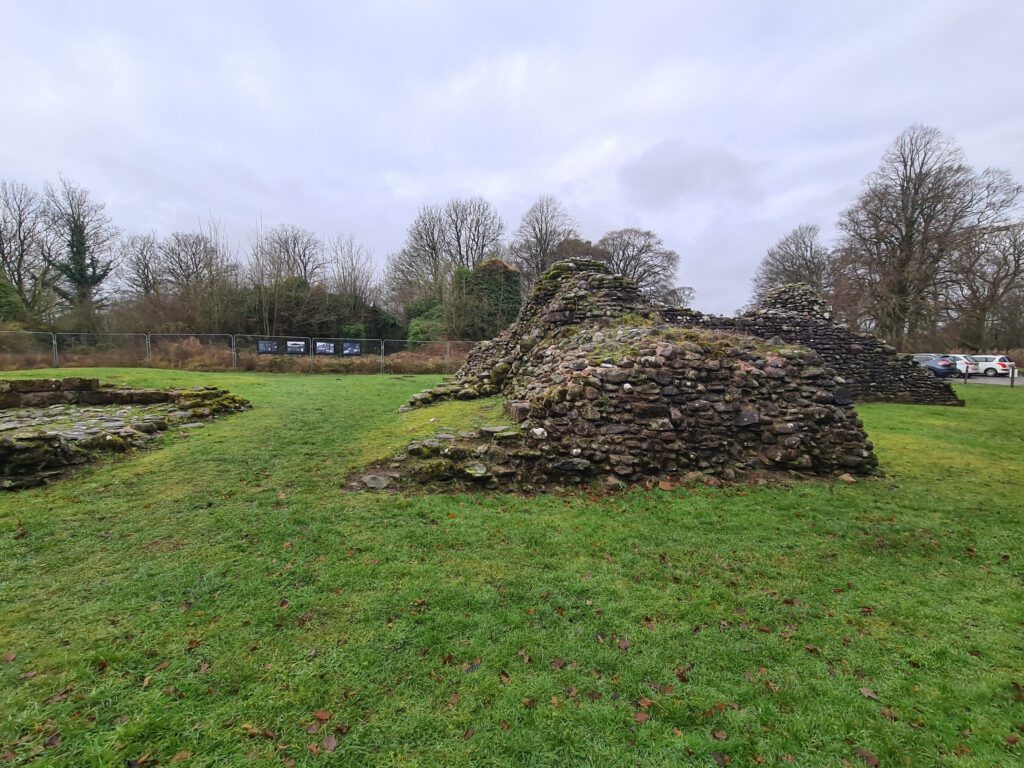
It was here that King James V mustered the Scottish army in 1542 before the battle of Solway Moss. Before that the castles great hall and other parts were undertaken major rebuilding works, in about 1500 by Kind James IV, who was a frequent visitor down at Lochmaben Castle.
During the Rough Wooing the castle was captured by the forces of Henry VIII, that was the year 1544. In October 1565 Mary, Queen of Scots and her husband Lord Darnley came down to Lochmaben, 23 years before Lord Maxwell seized the castle to overthrow the Protestant monarchy. James VI responded with a siege on the castle, supported by the English forces and in the end David Maxwell and five others were hanged.

In the early 17th century, the castle was abandoned and a lot of its stones were taken to be used in local buildings during the following centuries.
The castle itself doesn’t show this much anymore these days, however there are some information boards located there which give important info about what happened years ago. All in all it is a beautiful place to spend a couple of hours by enjoying a walk through the nature reserve surrounding the ruin, depending on the time of year you’re visiting you can see many swans, geese and ducks as well as attempt to try other various activities like bird watching and fishing. I was there in winter, so it was obviously not the best time for bird watching and as mostly in this area I just had to short of a time.
